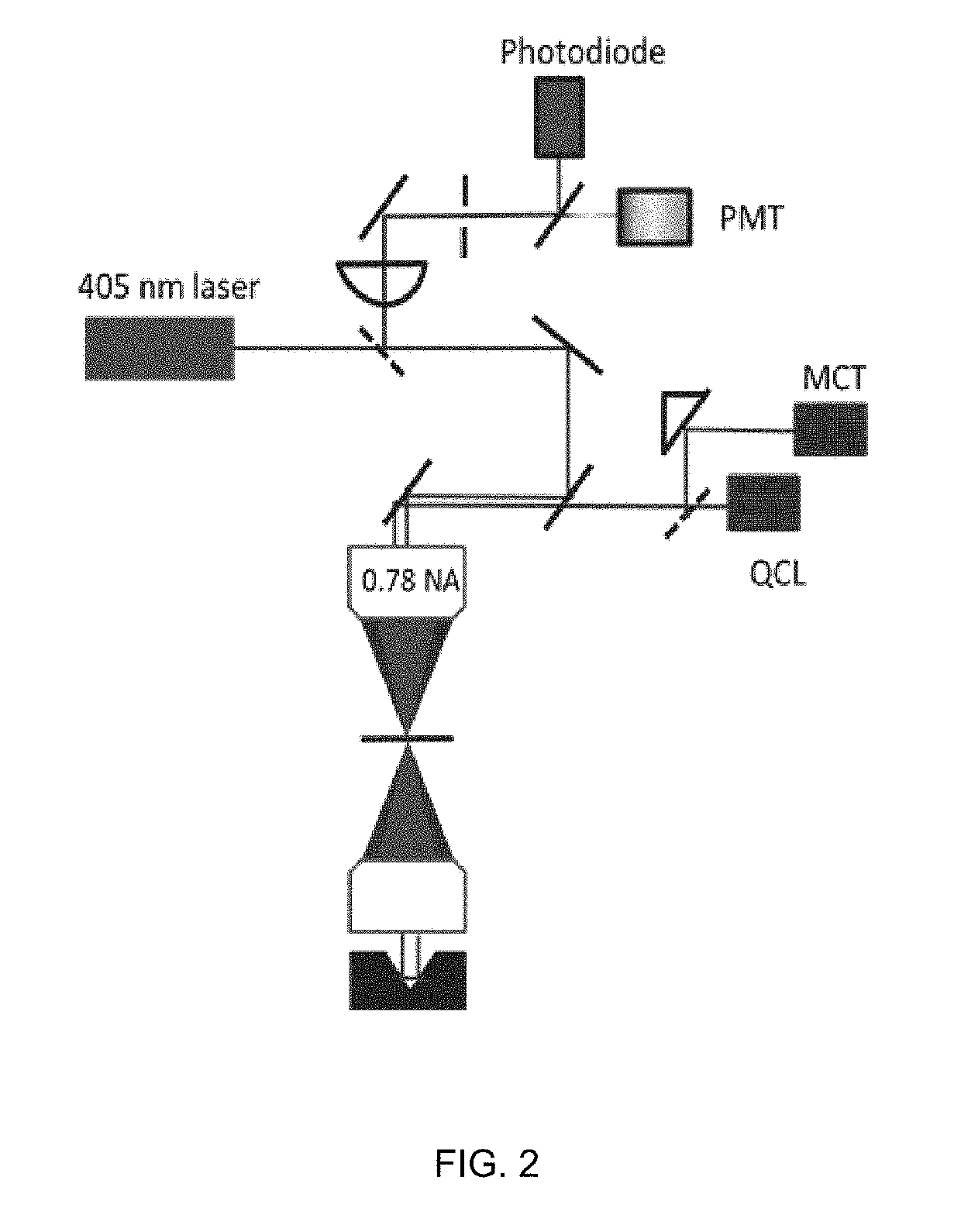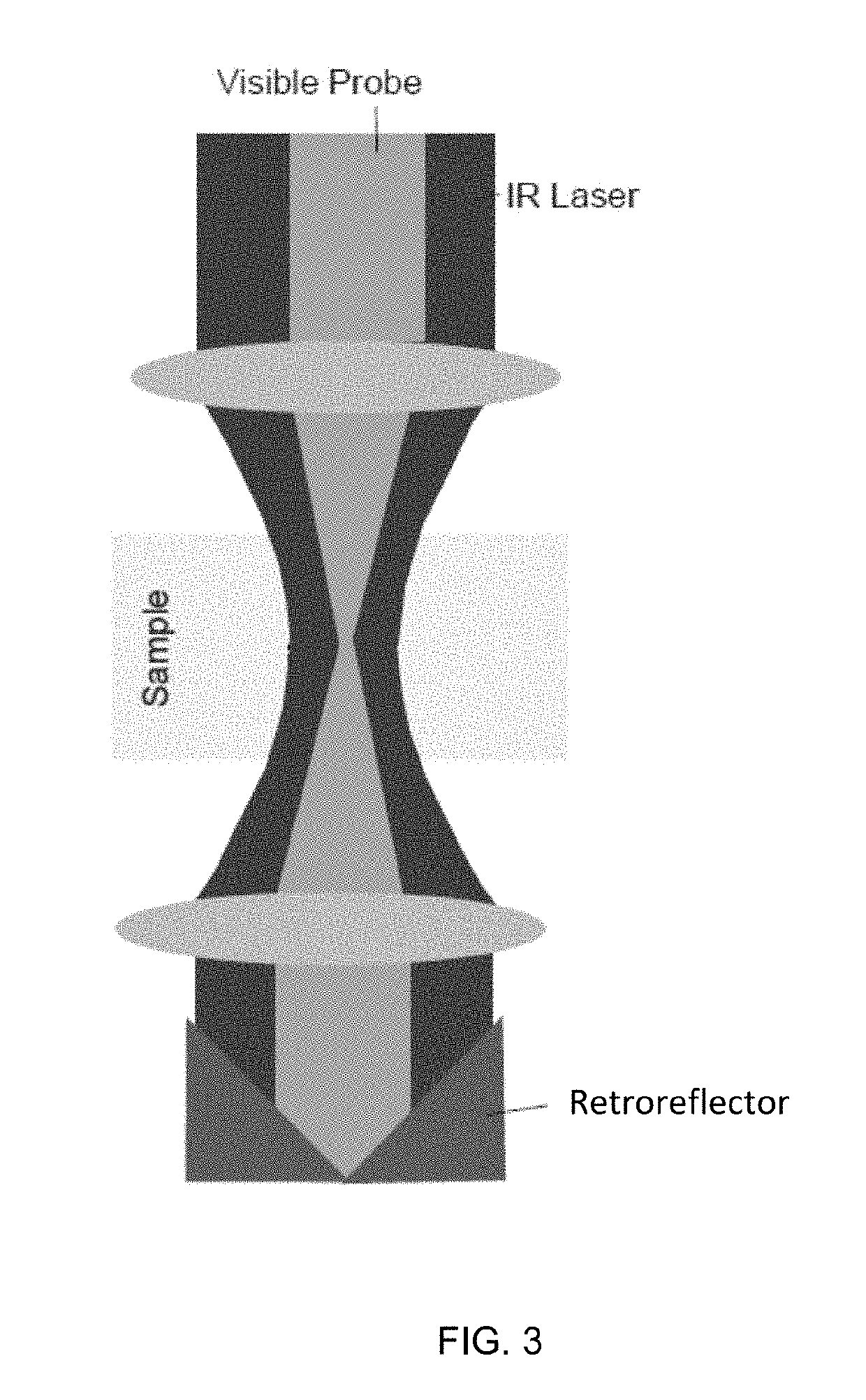Rapid multiplexed infrared 3D nano-tomography
a 3d nano-tomography and infrared technology, applied in the field ofrapid, can solve the problems of not being able to use instruments, and achieve the effects of increasing the image acquisition rate n-fold, reducing the cost of operation, and sufficient speed for studying chemical dynamics
- Summary
- Abstract
- Description
- Claims
- Application Information
AI Technical Summary
Benefits of technology
Problems solved by technology
Method used
Image
Examples
Embodiment Construction
[0031]The present invention provides a non-contact and non-destructive method and system for rapid, label free, nanoscale chemical imaging and tomography (3D). A sample undergoes photo-thermal heating using an IR laser and the resulting increase in temperature is measured by the modulation of one or more visible probes after they've interacted with the sample. Coherent illumination and detection is used to provide “super resolution” and better image quality.
[0032]The inelastically scattered light generated by the probe beam is separated in the detection arm via a dichroic mirror and detected via a high-gain photodetector. Spectral analysis of this light can be performed in a number of ways (suppressed for clarity), either through the use of multiple filters and dichroic mirrors, a diffraction grating, or an interferometric approach. Such a scheme provides access to all of the benefits of fluorescence and Raman microscopy in the same instrument.
Optical Super-Resolved InfraRed Imaging...
PUM
| Property | Measurement | Unit |
|---|---|---|
| surface roughness | aaaaa | aaaaa |
| core size | aaaaa | aaaaa |
| spectroscopic imaging | aaaaa | aaaaa |
Abstract
Description
Claims
Application Information
 Login to View More
Login to View More - R&D
- Intellectual Property
- Life Sciences
- Materials
- Tech Scout
- Unparalleled Data Quality
- Higher Quality Content
- 60% Fewer Hallucinations
Browse by: Latest US Patents, China's latest patents, Technical Efficacy Thesaurus, Application Domain, Technology Topic, Popular Technical Reports.
© 2025 PatSnap. All rights reserved.Legal|Privacy policy|Modern Slavery Act Transparency Statement|Sitemap|About US| Contact US: help@patsnap.com



